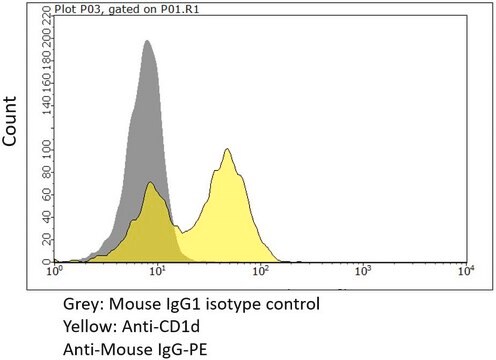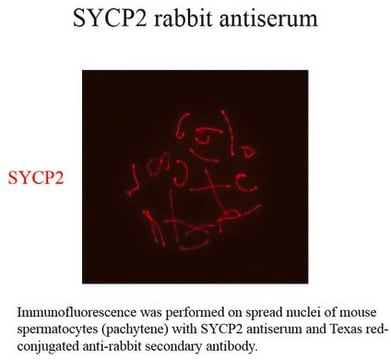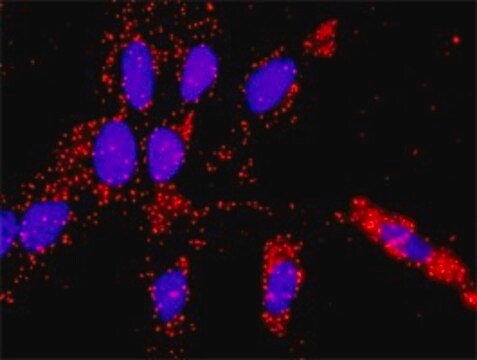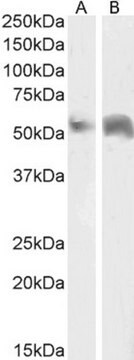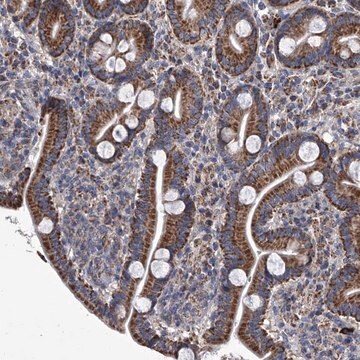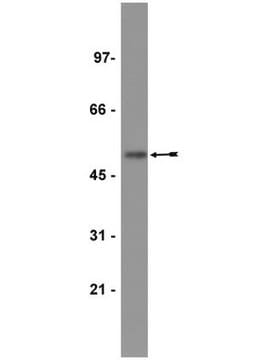MABC983
Anti-CD1d Antibody, clone D5
clone D5, from mouse
Synonym(s):
Antigen-presenting glycoprotein CD1d, R3G1, CD1d
About This Item
Recommended Products
biological source
mouse
Quality Level
antibody form
purified antibody
antibody product type
primary antibodies
clone
D5, monoclonal
species reactivity
human
technique(s)
immunoprecipitation (IP): suitable
western blot: suitable
isotype
IgG2bκ
NCBI accession no.
UniProt accession no.
shipped in
wet ice
target post-translational modification
unmodified
Gene Information
human ... CD1D(912)
General description
Immunogen
Application
Apoptosis & Cancer
Apoptosis - Additional
Western Blotting Analysis: A representative lot detected exogenously expressed CD1d in CD1d-transfected C1R human lymphoblastoid cells (Kim, H.S., et al. (1999). J Biol Chem. 274(14):9289-9295).
Immunoprecipitation Analysis: A representative lot immunoprecipitated intact as well as degraded CD1d from human penile urethral epithelial (PURL) cells following C. trachomatis (Kawana, K., et al. (2007). J Biol Chem. 282(10):7368-7375).
Immunoprecipitation Analysis: A representative lot immunoprecipitated exogenously expressed CD1d independent of glycosylation states from lysates of CD1d-transfected FO-1 human melanoma cells (Kim, H.S., et al. (1999). J Biol Chem. 274(14):9289-9295).
Quality
Western Blotting Analysis: 4.0 µg/mL of this antibody detected CD1d in 10 µg of THP-1 cell lysate.
Note: Longer exposure time is needed when using total lysates for Western blotting applications. Membrane preparation or immunoprecipitation can be employed to enrich membrane target proteins prior to Western blotting.
Target description
Physical form
Storage and Stability
Other Notes
Disclaimer
Not finding the right product?
Try our Product Selector Tool.
Storage Class Code
12 - Non Combustible Liquids
WGK
WGK 1
Flash Point(F)
Not applicable
Flash Point(C)
Not applicable
Certificates of Analysis (COA)
Search for Certificates of Analysis (COA) by entering the products Lot/Batch Number. Lot and Batch Numbers can be found on a product’s label following the words ‘Lot’ or ‘Batch’.
Already Own This Product?
Find documentation for the products that you have recently purchased in the Document Library.
Our team of scientists has experience in all areas of research including Life Science, Material Science, Chemical Synthesis, Chromatography, Analytical and many others.
Contact Technical Service